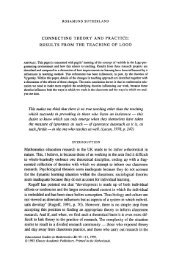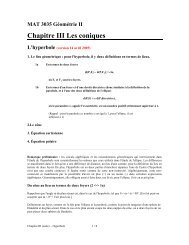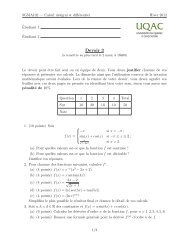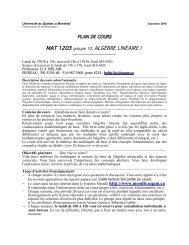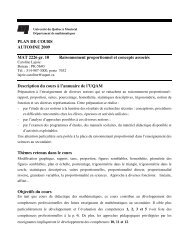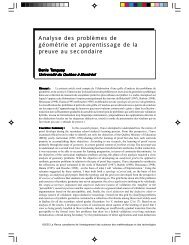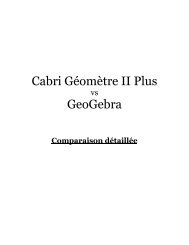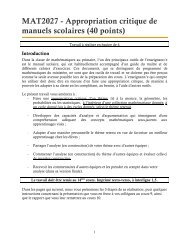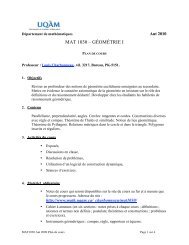COMPLEX GEOMETRY Course notes
COMPLEX GEOMETRY Course notes
COMPLEX GEOMETRY Course notes
You also want an ePaper? Increase the reach of your titles
YUMPU automatically turns print PDFs into web optimized ePapers that Google loves.
5.4 Heat equation approach<br />
Given an initial distribution of heat f(x) = F (x, 0) (t = 0) on a Riemannian manifold (X, g), then the heat<br />
F (x, t) at time t is governed by (∂ t + ∆ X )F = 0.<br />
Example 5.4.1. F is easily obtained for every t for S 1 , and in general for the torus as follows:<br />
F (0, t) = ∑ a n (t)e inθ .<br />
We have<br />
∂ t + ∆ θ = 0 =⇒ 0 = ∑ (<br />
a<br />
′<br />
n (t) + n 2 a n (t) ) e inθ<br />
=⇒ a n (t) = a n e −n2t , where a n = a n (0),<br />
=⇒ F (θ, t) = ∑ e −n2t a n e inθ .<br />
n≥0<br />
It follows F (θ, t) −→ a 0 = ∫ S 1 f(θ)dθ = Av S 1(f), where the integral is the initial distribution.<br />
Example 5.4.2. Let X = R. Doing the same exercise as above but using Fourier transforms, we get<br />
F (x, t) = √ 1 ∫<br />
∫<br />
e − (x−y)2<br />
4t f(y)dy = e R (x, y, t)f(y)dy.<br />
4πt<br />
R<br />
The function e R (x, y, t) = 1 √<br />
4πt<br />
e − (x−y)2<br />
4t is called the heat kernel. Similarly, e R n(x, y, t) = 1 √<br />
4πt<br />
e − ||x−y||2<br />
4t .<br />
On S 1 , we have e(x, y, t) = ∑ n e−n2t e in(x−y) = ∑ n e−n2t e inx e iny , where e −n2t are the eigenvalues of ∆, and<br />
e inx and e iny are the eigenfunctions. In general, the existence of e X (x, y, t) is difficult to obtain analytically<br />
but trivial on physical grounds.<br />
R<br />
Remark 5.4.1. F (x, t) is smooth for every t > 0, i.e., immediate smoothing by heat flow.<br />
In general, given a form α on (X, g), wish to solve<br />
{<br />
(∂t + ∆)A(t) = 0<br />
(∗)<br />
A(0) = α<br />
where α(t) is a form on X parametrized by t. Uniqueness of A(t) follows from:<br />
Lemma 5.4.1. ||A(t)|| is decreasing (non-strict) for a solution of (∗).<br />
Proof: ∂ t ||A(t)|| 2 = 2 〈∂ t A, A〉 = −2 〈∆A, A〉 = −2 〈 ||dA|| 2 + ||d ∗ A|| 2〉 ≤ 0.<br />
68



